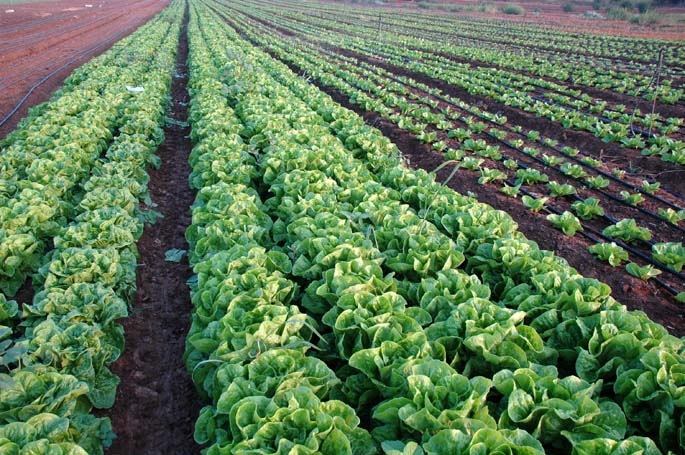Oct 31 2016
 Oceans are not the only receivers of microplastics. CREDIT: Wikimedia Commons.
Oceans are not the only receivers of microplastics. CREDIT: Wikimedia Commons.
Increasingly, microplastics are considered an environmental problem of global proportions. Although the attention until now has been on microplastics in the ocean and their impact on marine life, microplastics in soils were often overlooked.
Scientists are concerned about the lack of knowledge about the potential consequences of microplastics in agricultural lands through the application of sewage sludge.
In principle, sewage sludge is a waste product, but it can also be used as a horticultural and agricultural resource. Although there are useful nutrients in fertilizer based on sludge, for sustained use the proportions of harmful substances in the sludge should be kept under control.
In urban areas, huge amounts of microplastics from surface run-off, industry, and households reach the waste water treatment plants, where most of these microplastics are collected in the sewage sludge.
Currently, sewage sludge from municipal sewage treatment plants is applied to agricultural lands as an supplement to conventional fertilizers. In general, such applications are highly regulated because sludge may contain different harmful substances. However, at present, microplastics are not part of the regulatory scheme for using sludge in agriculture. The prospective outcomes related to food security and sustainability have not been adequately analyzed.
An article by Luca Nizzetto and Sindre Langaas from the Norwegian Institute for Water Research (NIVA) and Martyn Futter from the Swedish University of Agricultural Sciences (SLU) in Uppsala, recently published in the Environmental Science & Technology journal, has put forward these concerns.
Unknown Consequences
We have found figures from the Nordic countries suggesting that a large fraction of all the microplastics generated in Western societies tend to end up in the sludge in wastewater treatment plants. The particles reach agricultural soils through the sludge.
Luca Nizzetto, NIVA
The quantity of sewage sludge applied as fertilizer differs between countries. For example, in North America and Europe, on average, about 50% of sludge is applied as fertilizer. As reported by Statistics Norway, approximately two-thirds of the sludge is applied in this way.
According to estimates, every year, about 110,000-730,000 tons of microplastics are transferred to agricultural lands in North America and Europe, comprehensively. This amount is greater than the estimated total amount of microplastics occurring in oceans at present.
These numbers are highly alarming as the impact of microplastics being accumulated in agricultural lands is unknown.
Also, knowledge on the of impact microplastics on soil organisms, and on food safety and farm productivity is extremely limited.
The First Simulation of Microplastics Fate on Land and Rivers
The same authors with researchers from Oxford University presented a maiden mathematical model detailing the dynamics of the destiny of the microplastics in terrestrial environments and rivers, in an earlier article. Due to the lack of empirical data on emission of microplastics and their concentrations in soils and the stream system, the study was concieved to provide purely theoretical, though rigorous, analysis of the circulation of microplastics.
The simulations in the INCA Microplastics model have exhibited a strong influence of river characteristics and flows, and meteorological conditions in curbing the transfer of microplastics from agricultural lands into the ocean. Transfer of sewage sludge to agricultural lands plausibly represents a substantial source of microplastics to the coastal environments and oceans.
A follow-up study by Besseling et al. independently confirmed identical predictions for the transfer of microplastics into rivers.
INCA Microplastics is a vital tool for the assessment of risk and the evaluation of sludge management situations. This is the maiden model that could simulate not only the transfer of microplastics to soils, but also the consequential fate of such materials in surface waters and soils.
Surprising Knowledge Gap
Authorities and researchers have hardly taken into account the outcomes of export of microplastics from urban waste water to agricultural lands, specifically with respect to the expanded attention toward microplastics in the ocean.
Clearly further research is needed to get an overview of the problem - and to find solutions - so that the growing need in the community for recycling and so-called circular economy can be safeguarded.
Luca Nizzetto, NIVA